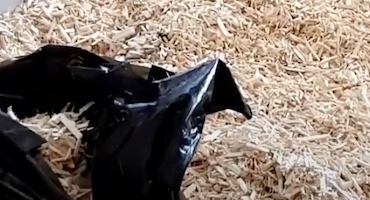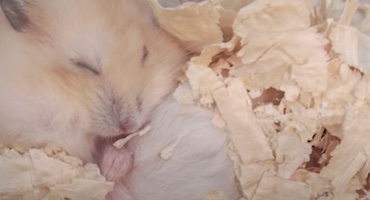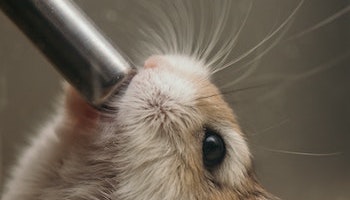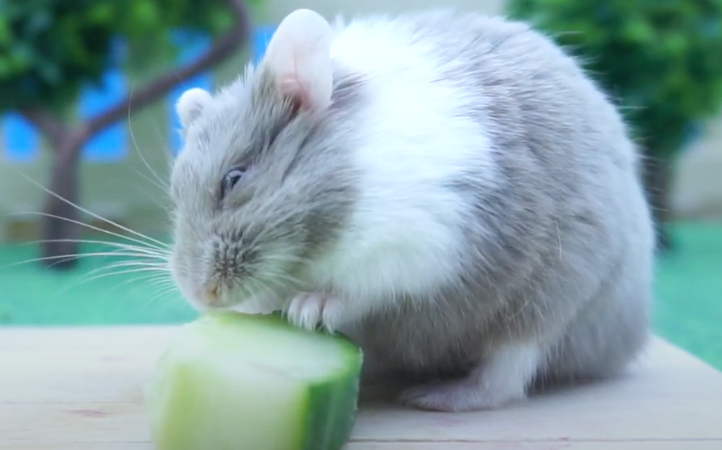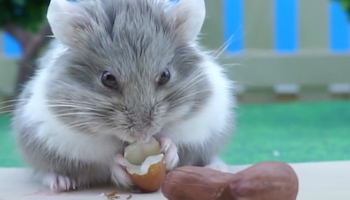 Hamsters are fun little creatures and extremely playful as pets. Having a small hamster pet can be incredibly fun and satisfying, however, when it comes to feeding your little hamsters, there are definitely a few things you need to keep in mind. If you are wondering ‘can hamsters eat peanuts,’ then the answer is yes, hamsters can eat peanuts!
Hamsters are fun little creatures and extremely playful as pets. Having a small hamster pet can be incredibly fun and satisfying, however, when it comes to feeding your little hamsters, there are definitely a few things you need to keep in mind. If you are wondering ‘can hamsters eat peanuts,’ then the answer is yes, hamsters can eat peanuts!
Out of the hundreds of varieties of nuts, there are a few which are safe for your little hamsters, and few which are quite toxic. Thankfully, peanuts can be quite a tasty and nutritious treat for your hamsters, as long as you feed it to them in moderation. Here is everything you need to know about feeding peanuts to your hamsters.
Syrian hamsters are a popular breed of domestic hamsters which many people keep as pets. These little hamsters have a great appetite and love to eat all kinds of foods. If you want to feed peanuts to your Syrian hamsters, you can give them one peanut just about once a week or once in ten days. However, avoid feeding any more, as they can be toxic for your little hamsters.
Campbell’s dwarf hamsters are a smaller species of hamsters, and even though they love to eat as much as they larger species of Syrian hamsters, you should be cautious about how much you are feeding them. Give your Campbell’s dwarf hamsters one peanut just once in two weeks, as these smaller species of hamsters cannot digest too much of these nuts.
Winter whites dwarf hamsters are also a smaller species of dwarf hamsters. These hamsters can even eat peanuts but in moderation. Give your winter whites dwarf hamsters one peanut just once in two weeks.
Robowski hamsters are another larger species of hamsters, just like the Syrian hamsters. These hamsters can tolerate nuts like peanuts more often than the dwarf hamster species. Give your Robowski hamsters one peanut once in two weeks only, as they are very prone to diabetes and obesity.
Finally, Chinese hamsters are also a species of dwarf hamsters, so you need to be very careful about the number of nuts you are giving them. Peanuts in moderation are excellent for these hamsters. Stick to just one peanut every two weeks for your little Chinese hamsters.
There are several species of hamsters which still live in the wild in many parts of the world. In these parts, the wild hamsters are omnivorous creatures and will eat a variety of foods which they hunt and pick on their own. The wild hamsters survive on a diet of wild berries and fruits, vegetables, plants, nuts, seeds, grains, and leaves. Of course, these hamsters also eat small insects, frogs, and lizards as well.
Domestic hamsters have a far more healthy and balanced diet if you compare them to these wild hamsters. The domestic hamsters survive mainly on exceptional hamster food you will find in pet stores. Other than that, you can also give your hamsters the occasional safe foods as treats, such as nuts, grains, seeds, small pieces of fruits and vegetables, etc.
What are the health benefits of hamsters eating peanuts?
As long as you feed peanuts to your pet hamsters in moderation, it can be very healthy for them. Peanuts contain protein, unsaturated fats, fiber, vitamin B, and potassium.
The protein in peanuts plays a significant role in building strong and healthy bones, cartilage, muscles, and skin for your little hamsters.
Even though peanuts contain fat, they are the excellent kind of unsaturated fats. As long as you give your hamsters these peanuts in moderation, the unsaturated fats can be very healthy for them.
Fiber is excellent for your hamster’s digestive system and other functions, helping them have a healthy stomach and gut as well as functional bowel movements.
Vitamin B plays an essential role in building healthy blocks for cell metabolism, brain function, and the energy levels in your hamsters.
Finally, potassium supports the bone and muscle health of your hamsters. Along with that, it also encourages cardiovascular health and helps in maintaining healthy blood pressure for your little hamster pets.
What are the risks of hamsters eating peanuts?
In moderation, peanuts can be an excellent treat for your hamsters. However, if you overfeed peanuts to your hamsters, it can lead to stomach issues such as bloating, vomiting and diarrhea, and abdominal cramps. Moreover, too many peanuts can also cause obesity and diabetes in your little hamsters, as these little creatures are already prone to these conditions.
It is vital that you clean out your hamster’s cage regularly to remove any uneaten pieces of peanuts from their cages, as your hamsters are innate hoarders. The piled away peanuts can rot, which can cause health issues for your hamsters if they eat them later on.
Can hamsters eat peanut shells?
Some nuts have tough shells which your hamsters cannot break. However, when it comes to peanuts, your hamsters have a great time opening up the shells and finding the peanut inside it. You can definitely give the peanut with their shells to your hamsters. However, they do not actually consume the shells, so make sure you clean it out of their cages once they have opened up the shells on their own.
Can hamsters eat salted or roasted peanuts?
Hamsters might enjoy the occasional roasted peanuts, but make sure that the peanuts are not salted or do not have any extra oils on them. As for salted peanuts, they are an absolute no-no for your little hamsters!
How many peanuts can hamsters have?
Give your Syrian and Robowski hamsters just one peanut per week or every ten days. As for your dwarf hamsters, they require an even lesser quantity! Give your dwarf hamsters; Campbell’s dwarf hamsters, winter whites dwarf hamsters and Chinese hamsters just one peanut once in two weeks.
Conclusion
Remember, feed peanuts to your hamsters in moderation, and it can be a wonderful treat for them every once in a while, but do not overfeed them these nuts. Keep your hamsters on a healthy, balanced diet of exceptional hamster food, and give them these occasional treats for a change of taste. Make sure you find out which foods are safe for them, and how much quantity you should be feeding them, first.
Share
Related Posts
Hamsters are a trendy animal which people love to keep as pets. While there are several wild hamster [...]
Pet owners who have hamsters know how much their little pets enjoy nibbling on all kinds [...]
When it comes to feeding safe foods to your hamsters, the list can be quite confusing. Many of [...]

